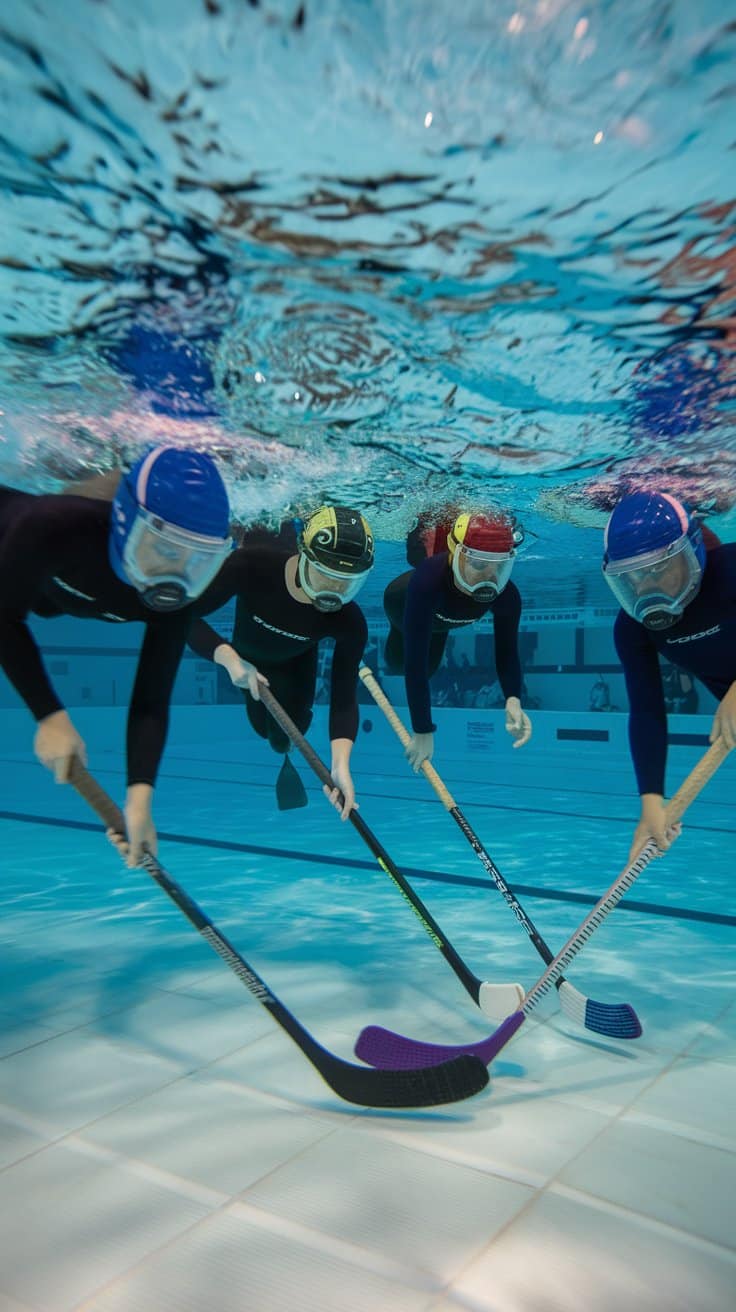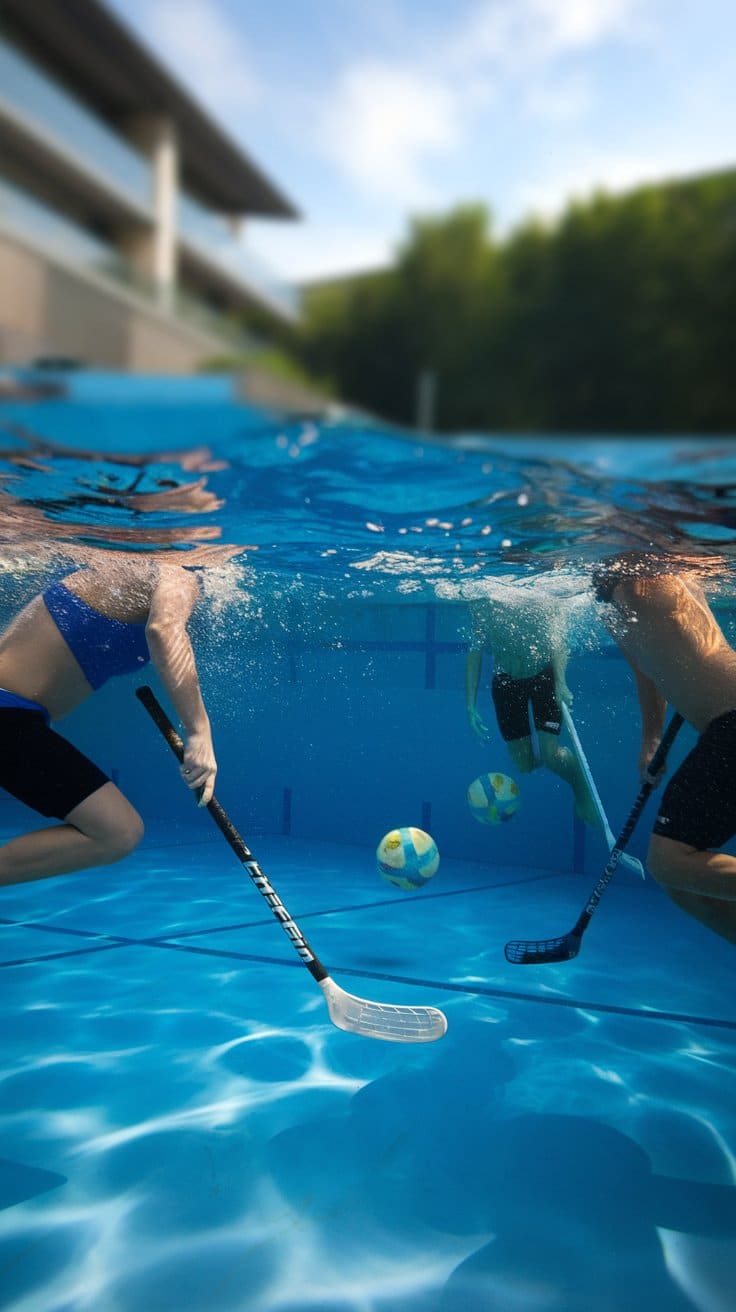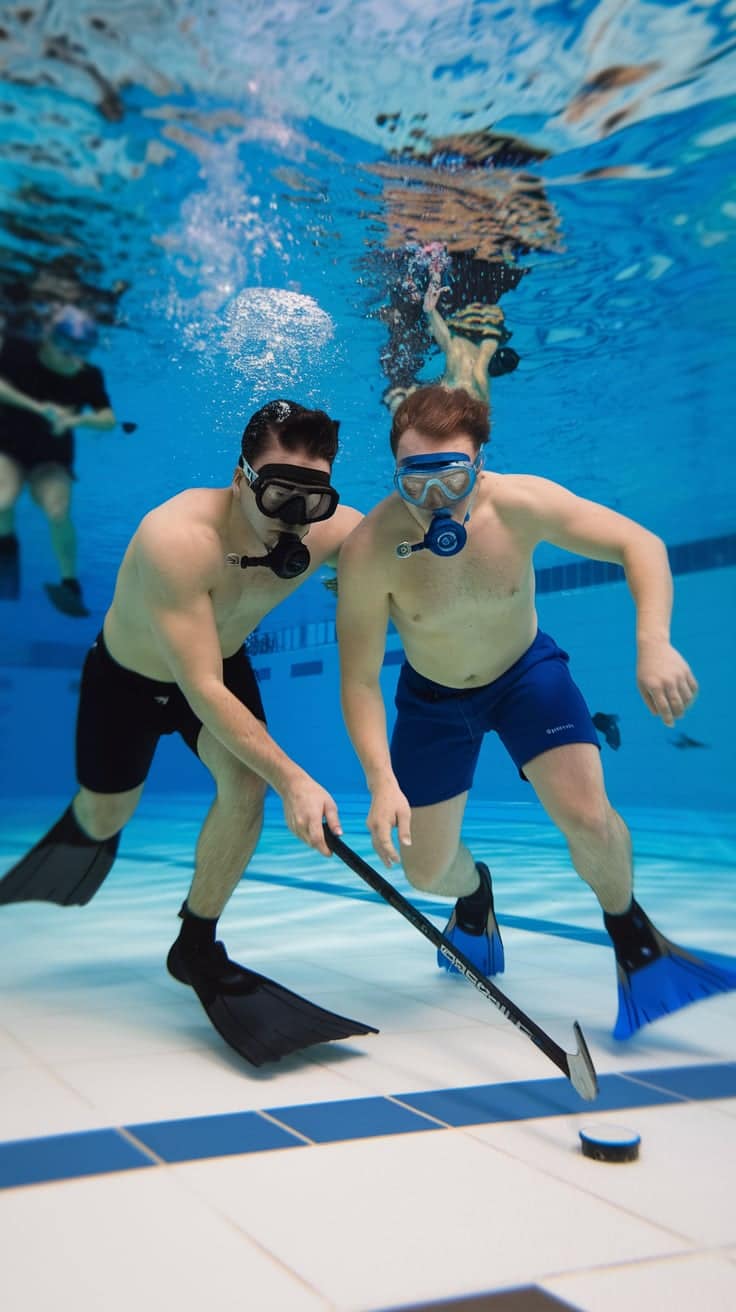When I first discovered underwater hockey, one of my biggest questions was about the stick. Unlike traditional hockey sticks, underwater hockey sticks are short, curved, and uniquely designed to be used efficiently underwater. They are typically around 10 to 14 inches long, made from wood or plastic, and are used to push a puck along the pool floor.
As an underwater hockey enthusiast, I’ve seen firsthand how the right stick can make a difference in your game. A well-designed stick provides better control, speed, and accuracy when maneuvering the puck. But what exactly makes an underwater hockey stick special? Let’s dive deep into this fascinating piece of equipment!
Read also: Underwater Hockey Rules: The Ultimate Guide to This Thrilling Sport!
The Unique Design of an Underwater Hockey Stick
Unlike ice hockey or field hockey sticks, underwater hockey sticks are much smaller and have a distinct shape. Here’s what makes them unique:
| Feature | Details |
|---|---|
| Length | 10 to 14 inches |
| Material | Wood, plastic, or composite |
| Shape | Curved and ergonomic for grip |
| Color | Typically white (for one team) and black (for the other) |
| Texture | Often has a rough surface for better puck control |
Most underwater hockey players use sticks made of wood or reinforced plastic, which provides a balance of durability and control. Some advanced sticks are designed with textured grips to enhance handling underwater.
Why Are Underwater Hockey Sticks So Short?
You might be wondering: Why such a small stick? The answer lies in the nature of the game. Underwater hockey is played on the pool floor, and players need quick, agile movements. A short stick allows for:
- Better maneuverability in tight spaces.
- Faster wrist flicks to pass or shoot the puck.
- Improved control while swimming and handling the puck simultaneously.
According to Nigel Cross, a veteran underwater hockey coach, “A shorter stick lets players make fast movements without getting tangled up. It’s all about control and quick reaction.”
Check Out: Underwater Hockey Stick
Materials Used in Underwater Hockey Sticks
Different materials impact the durability and performance of the stick. Here’s a breakdown:
1. Wooden Sticks
- Most traditional underwater hockey sticks are made of wood, often marine plywood.
- Wooden sticks provide a solid grip and a natural feel.
- They can wear down over time but remain popular among experienced players.
2. Plastic Sticks
- Modern underwater hockey sticks are increasingly made from plastic or composite materials.
- Plastic sticks are waterproof and more resistant to damage.
- They can be custom-designed for different play styles.
3. Hybrid Sticks
- Some manufacturers now produce composite sticks that combine wood and plastic.
- These sticks offer strength, flexibility, and better control.
Choosing the Right Stick for Your Play Style
Your play style determines the best type of stick for you. Here are some key considerations:
| Play Style | Best Stick Type |
| Aggressive | Heavier wooden sticks for stronger shots |
| Defensive | Wider blade for better blocking |
| Speedy | Lightweight plastic for quick flicks |
| Beginner | Medium-weight hybrid for balance |
If you’re just starting, go for a medium-weight hybrid stick to balance power and control.
FAQ: Common Questions About Underwater Hockey Sticks
1. How much does an underwater hockey stick cost?
A decent underwater hockey stick costs between $20 and $50, depending on material and brand.
2. Can I make my own underwater hockey stick?
Yes! Many players craft their own wooden sticks, customizing the curve and texture.
3. How do I maintain my underwater hockey stick?
Rinse it with fresh water after each game to prevent chlorine damage and store it in a cool, dry place.
Expert Insights on the Best Sticks
I spoke with John Peters, a former national underwater hockey player, about what makes a great stick. He said, “Your stick should feel like an extension of your hand. It needs to be light, durable, and have a solid grip.”
The best players often experiment with different sticks before finding their perfect match. If you’re serious about the sport, investing in a high-quality stick can significantly improve your gameplay.
The Future of Underwater Hockey Sticks
Manufacturers are continuously innovating. Some brands are developing 3D-printed hockey sticks, which allow for custom designs tailored to individual players.
Emerging trends include:
- Eco-friendly materials to reduce plastic waste.
- Advanced grip technology for better control underwater.
- More aerodynamic designs to increase speed and precision.
Tips for Beginners Using Underwater Hockey Sticks
If you’re new to the game, here are some helpful tips:
- Practice your grip – A comfortable hold improves control.
- Experiment with different sticks – Try both wooden and plastic versions to see what suits you best.
- Work on your flicking technique – A well-executed flick moves the puck faster and more accurately.
- Keep your stick clean – Regular rinsing prevents material wear and ensures longevity.
- Join a local underwater hockey club – Learning from experienced players will accelerate your progress.
Final Thoughts
If you’re new to underwater hockey, choosing the right stick is essential. Whether you prefer a classic wooden stick or a modern plastic version, the key is to find one that matches your play style. Test different options and see what feels best in your hands.
Want to step up your underwater hockey game? Invest in a quality stick, practice your flicks, and dive into the action!
That’s my take on underwater hockey sticks. Have you tried the sport? Let me know in the comments!





